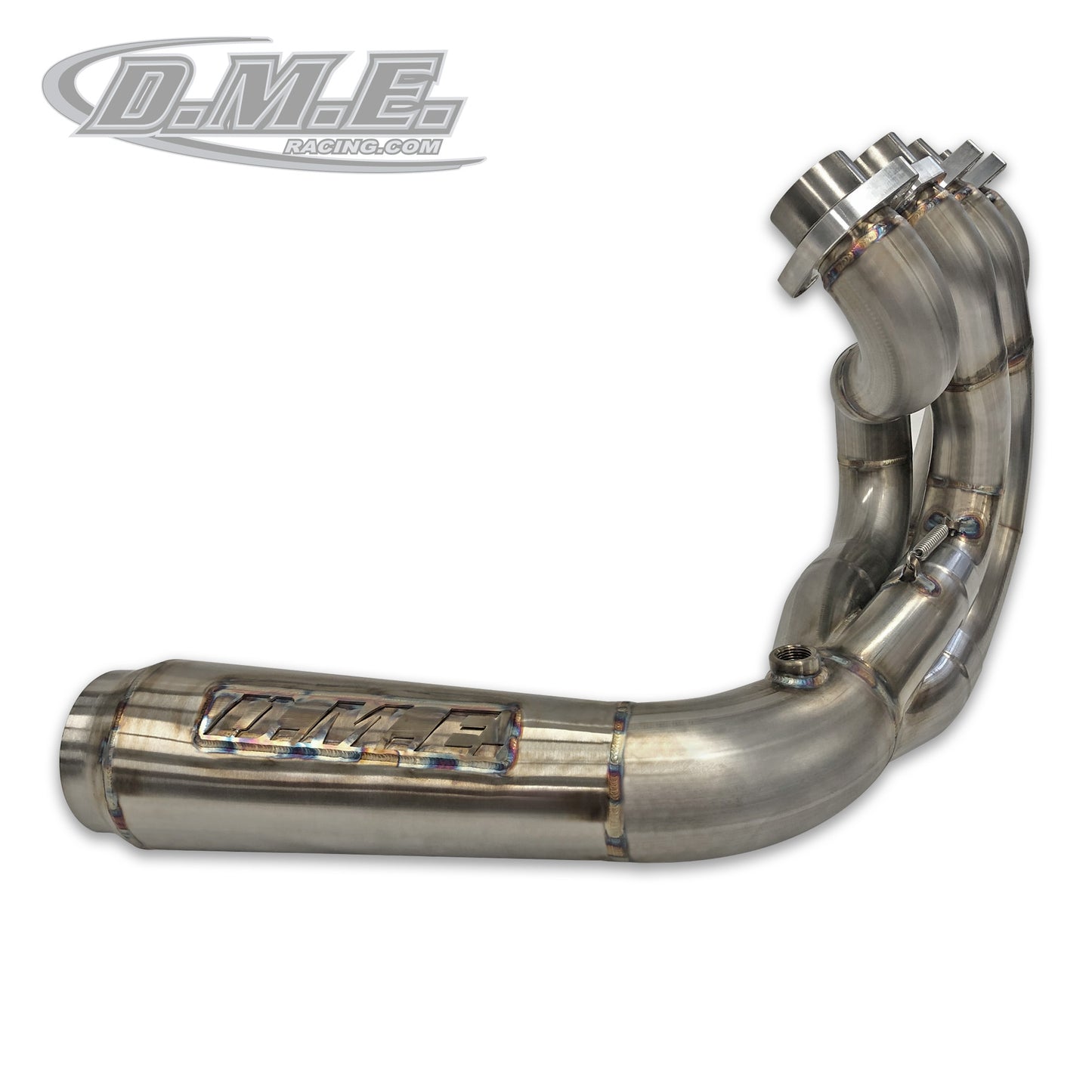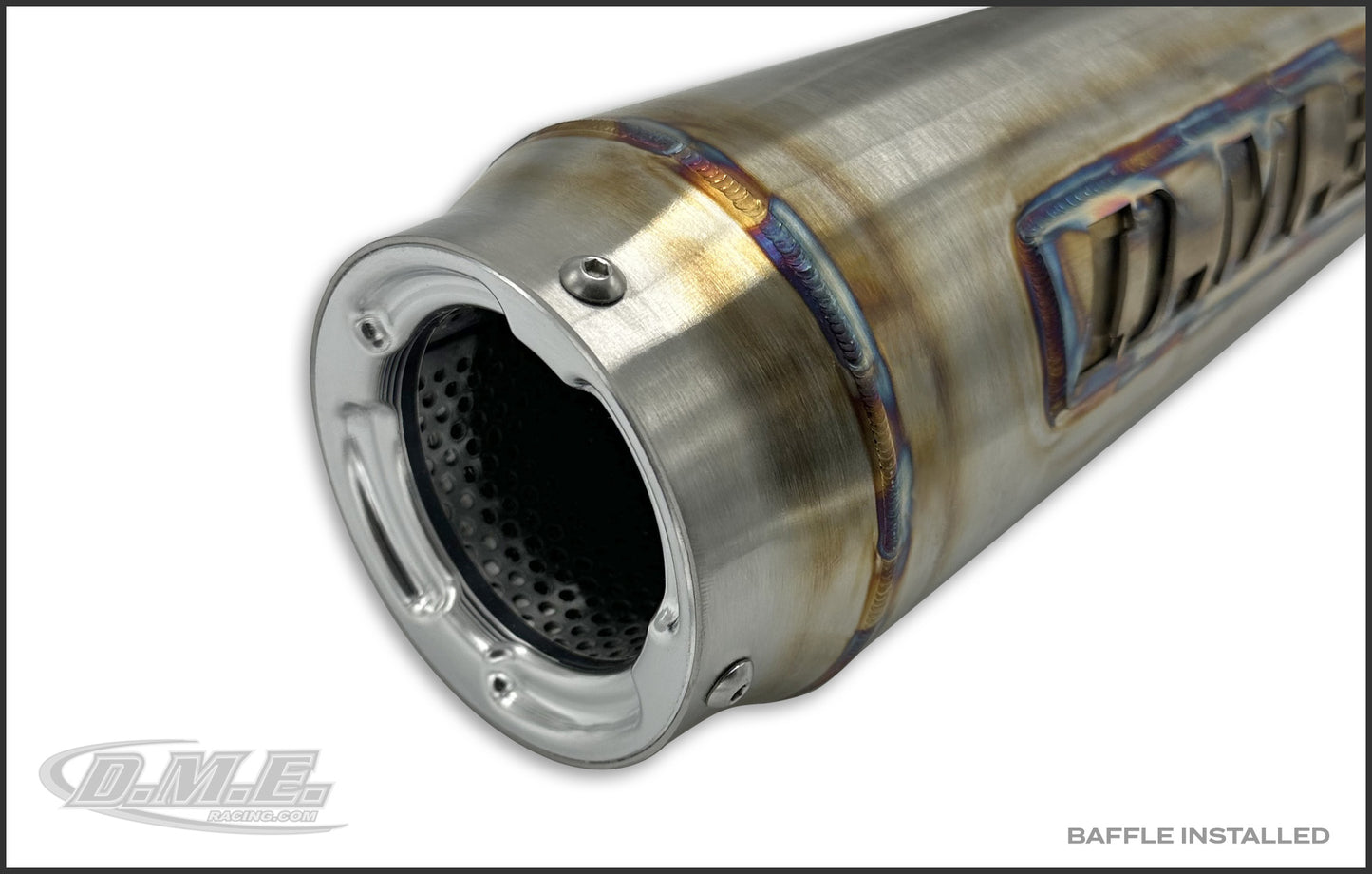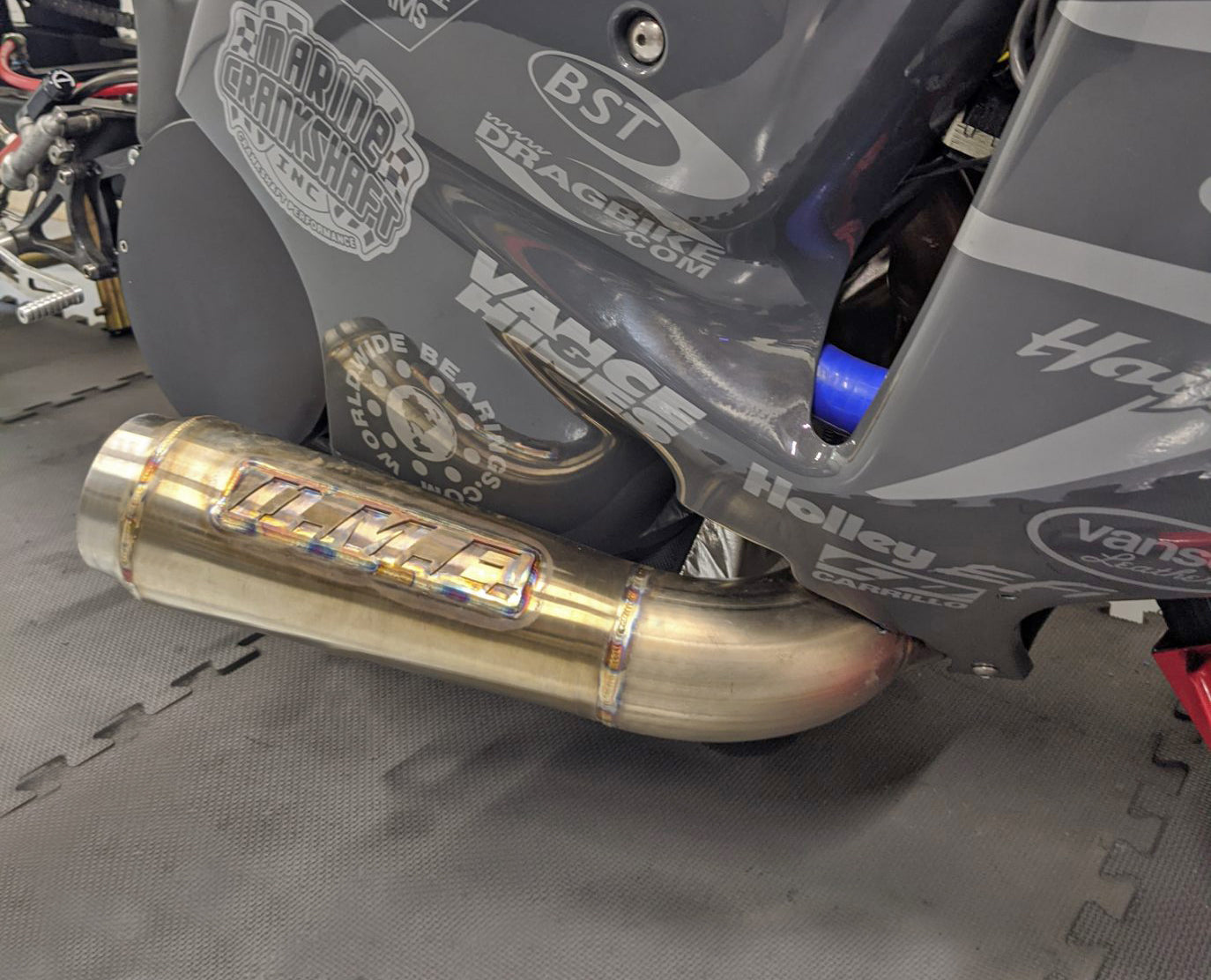DME Racing
DME Racing Mark1 Motorcycle Exhaust
DME Racing Mark1 Motorcycle Exhaust
Couldn't load pickup availability
DME Racing’s Mark1 Exhaust is a high-performance tuned exhaust header featuring our unique reversion cone that naturally creates back pressure to deliver performance gains on the racetrack where you need it.
APPLICATION OPTIONS
- Standard (Naturally Aspirated) is designed for naturally aspirated motorcycles that sometimes use nitrous. Features a step from 1.75″ to 1.875″ diameter pipe.
- Nitrous (Naturally Aspirated/Nitrous) is designed with a 1.875” diameter primary pipe for nitrous-assisted motors using 250+ horsepower of nitrous oxide.
FITMENT
- Kawasaki ZX-10R / 2004-2005 and 2011+
- Kawasaki ZX-14R / All Years (Radiator will need to be cut for fitment)
- Suzuki GSX-R1000 / 2001-2017+
- Suzuki Hayabusa / G1-G2-G3
BAFFLE OPTION
- If ordering with a Baffle, the baffle will be installed before shipment. The baffle can be removed.
- Adding a Baffle will change the look of your outlet pipe by making it round to fit the baffle.
- Baffles are not available for ‘already-made’ exhaust systems. Systems are either built with the baffle or without.
FITMENT NOTES
- Some bikes require modifications of the radiator.
- Fairing modification is required for fitment on the pipe side of the motorcycle.
- Designed to be used with DME Racing Billet Oil Pans, will also work with OEM oil pans.
FEATURES
- Material: Stainless Steel
- Reversion Cone
- Our outward trajectory design keeps the heat off your leg on launch.
- Fits flush with the bottom case.
- Will fit motorcycles that are short-necked and de-raked.
FAQ’s
-
What fuel fuel map should I use with a DME Racing exhaust system?
There is no one size fits all mapping. Our exhausts are built for ALL-OUT race applications. And with every engine combination being different, we recommend that your engine and exhaust be tuned on a dyno or preferably track tuned for maximum results. -
What is the torque specification for the DME Sidewinder?
We do not have an exact torque spec. for the mounting flange bolts, but we can suggest somewhere between 10-16 lb-ft. Do not over-tighten, or you will bend the flanges.
How does the DME Racing Mark1 Reversion Cone Eliminate Exhaust Reversion?
Reversion is where exhaust gases flow back into the combustion chamber contrary to their intended direction and can negatively impact engine performance.
The DME Racing Reversion Cone is specifically designed to modify the flow of exhaust gases in a controlled manner to increase the engine’s overall efficiency by reducing drag and increasing thrust to improve your motorcycle’s performance.
What is Exhaust Reversion?
Exhaust reversion is a phenomenon that occurs in internal combustion engines, including those in motorcycles, where exhaust gases flow back into the intake system or combustion chamber during specific conditions in the engine’s operation. It is also known as exhaust gas reversion.
Here’s how exhaust reversion happens:
Intake Valve Timing: In a four-stroke engine, the intake valve opens to allow the air-fuel mixture to enter the combustion chamber during the intake stroke. The intake valve opening and closing timing is carefully controlled to optimize engine performance. However, at certain engine speeds and conditions, particularly at low RPMs and during valve overlap (when both the intake and exhaust valves are partially open simultaneously), exhaust gases can flow backward into the intake manifold.
Pressure Waves: As the exhaust gases exit the engine through the exhaust system, they create pressure waves that travel down the exhaust pipes. These waves can interact with the opening intake valve, causing a pressure pulse that pushes some of the exhaust gases back into the intake system.
Exhaust Reversion can have several negative effects on engine performance:
Reduced Efficiency: When exhaust gases flow back into the intake system, they displace fresh air-fuel mixture, leading to a less efficient combustion process.
Lower Power Output: The presence of exhaust gases in the intake system reduces the oxygen content in the combustion chamber, leading to incomplete combustion and reduced power output.
Increased Heat: Exhaust gases are much hotter than the intake charge. When reversion occurs, it can introduce excessive heat into the intake system, potentially leading to engine overheating.
To mitigate exhaust reversion and optimize engine performance, tuners use various techniques, such as tuning the intake and exhaust system design, using tuned exhaust headers, adjusting valve timing, and implementing variable valve timing technologies. These measures help minimize the negative effects of exhaust reversion and ensure efficient engine operation across a wide range of RPMs and loads.
Share








